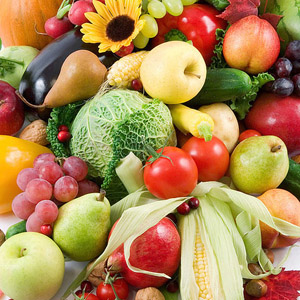Many articles have been reported about the relation between insufficient intake of dietary fiber and lifestyle disease, i.e. myocardial infarction, ischemic stroke, cardiovascular disease, diabetes, breast cancer and gastric cancer. Then the target amount has been set. But the reports about the relation between the intake of dietary fiber and colorectal cancer do not match. It’s unclear that which the intake of dietary fiber in daily life has relation with constipation or not.
- Dietary Fiber and Risk of Coronary Heart Disease
- Dietary fibre intake and risk of cardiovascular disease (pdf)
- Dietary Fiber Intake and Risk of First Stroke (pdf)
- Dietary fiber intake and stroke risk (pdf)
- Greater Whole-Grain Intake Is Associated with Lower Risk of Type 2 Diabetes, Cardiovascular Disease, and Weight Gain (pdf)
- Fiber and Magnesium Intake and Incidence of Type 2 Diabetes
- Dietary fiber intake and risk of breast cancer (pdf)
- Dietary Fiber Intake Reduces Risk for Gastric Cancer
- Dietary Fiber Intake and Risk of Colorectal Cancer
- Dietary fibre, whole grains, and risk of colorectal cancer (pdf)
In the meta-analysis with trial study, negative correlation has been suggested between the intake amount of dietary fiber and blood pressure, LDL cholesterol and fasting plasma glucose.
- Effect of dietary fiber intake on blood pressure
- Cholesterol-lowering effects of dietary fiber (pdf)
- Dietary Fiber for the Treatment of Type 2 Diabetes Mellitus (pdf)
In 2015 edition, in order to calculate the dietary reference intakes of dietary fiber, they have compromised of ideal value and reality. Based on the National Health and Nutrition Examination Survey in 2010 and 2011, the median is 13.7 g/d. On the other hand, ideal value besed on the pooled analysis is 24 g/d. The intermediate of them is 18.9 g/d. They have extrapolated body surface area from the ratio of reference weight in each the gender and age groups to reference weight in adult and have set the target amount for each gender and age groups. They have not set the additional amount for pregnant and lactation and they have not set the target amount for child between 1 and 5 years old because it’s difficult to quantify the intake. They don’t ensure the effect of dietary fiber by supplements.
| Gender | Male | Female |
|---|---|---|
| Age | Target Amount | Target Amount |
| 0-5 M | ||
| 6-11 M | ||
| 1-2 | ||
| 3-5 | ||
| 6-7 | ≥ 11 | ≥ 10 |
| 8-9 | ≥ 12 | ≥ 12 |
| 10-11 | ≥ 13 | ≥ 13 |
| 12-14 | ≥ 17 | ≥ 16 |
| 15-17 | ≥ 19 | ≥ 17 |
| 18-29 | ≥ 20 | ≥ 18 |
| 30-49 | ≥ 20 | ≥ 18 |
| 50-69 | ≥ 20 | ≥ 18 |
| 70- | ≥ 19 | ≥ 17 |
| Pregnant | ||
| Lactation |
The Dietary reference Intakes of dietary fiber in 2010 edition is based on the article, Dietary Fiber and Risk of Coronary Heart Disease, in which the reduction of the mortality has been suggested in more than 24 g/d intake group and the increase of mortality has been suggested in less than 12 g/d group. They had set the intermediate value, 18 g/d, as reference. In the National Health and Nutrition Examination Survey in 2005 and 2006, the median intake is 12.3-16.3 g/d in adult male and 11.8-16.1 g/d in adult female, respectively. Then it seems to be determined that the ideal value 24 g/d is not practical for most Japanese.
| Gender | Male | Female |
|---|---|---|
| Age | Target Amount | Target Amount |
| 0-5 M | ||
| 6-11 M | ||
| 1-2 | ||
| 3-5 | ||
| 6-7 | ||
| 8-9 | ||
| 10-11 | ||
| 12-14 | ||
| 15-17 | ||
| 18-29 | ≥ 19 | ≥ 17 |
| 30-49 | ≥ 19 | ≥ 17 |
| 50-69 | ≥ 19 | ≥ 17 |
| 70- | ≥ 19 | ≥ 17 |
| Pregnant | ||
| Lactation |
References:
The Dietary Reference Intakes for Japanese (2015 edition) Carbohydrate (pdf)
The Dietary Reference Intakes for Japanese (2010 edition) Carbohydrate (pdf)


